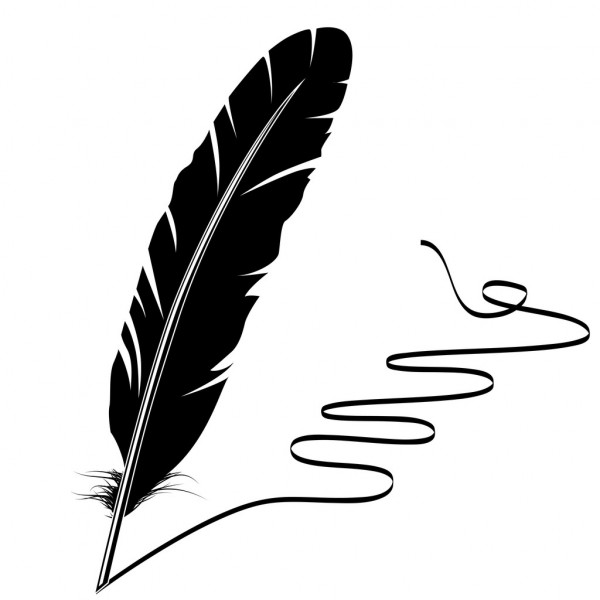Books
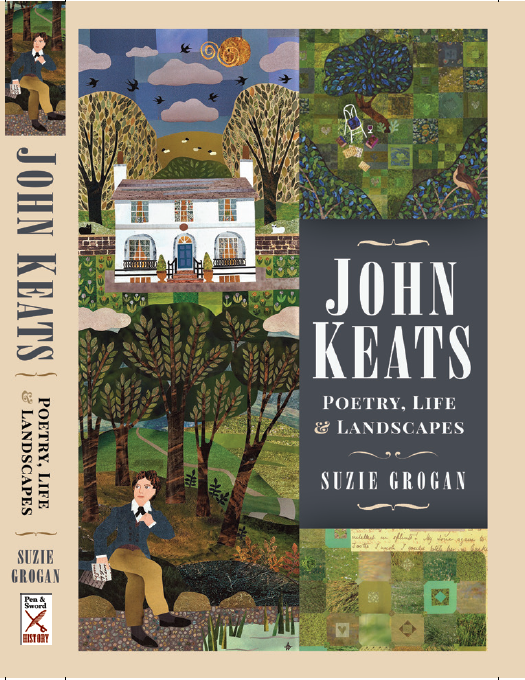
John Keats - Poetry, Life & Landscapes
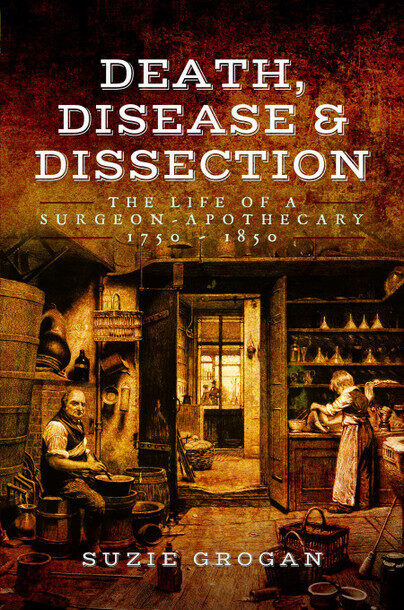
Death, Disease & Dissection
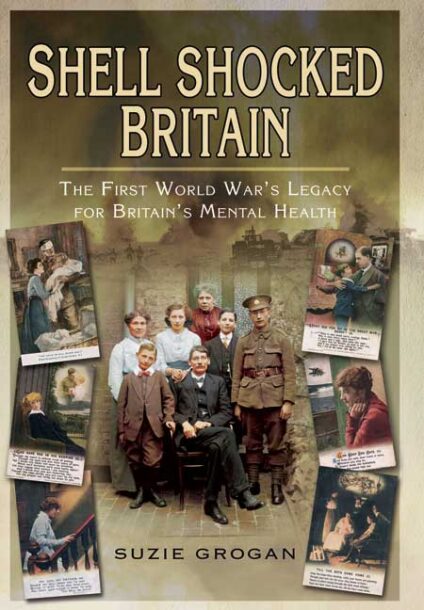
Shell Shocked Britain
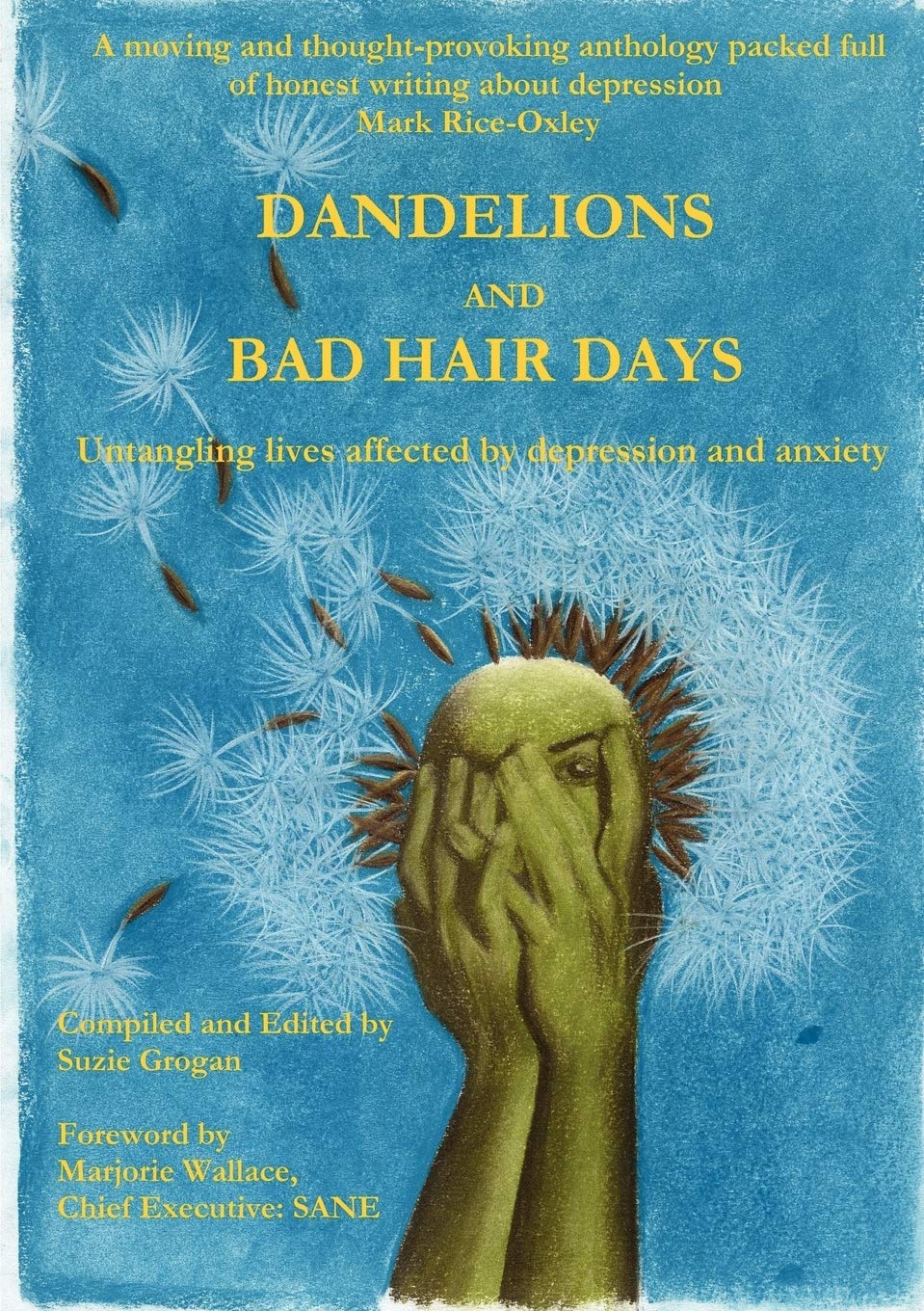
Dandelions & Bad Hair Days

‘We read fine things but never feel them to the full until we have gone the same steps as the Author.’ (John Keats to J.H. Reynolds, Teignmouth May 1818)
John Keats is one of Britain’s best-known and most-loved poets. Despite dying in Rome in 1821, at the age of just 25, his poems continue to inspire a new generation who reinterpret and reinvent the ways in which we consume his work.
Apart from his long association with Hampstead, North London, he has not previously been known as a poet of ‘place’ in the way we associate Wordsworth with the Lake District, for example, and for many years readers considered Keats’s work remote from political and social context. Yet Keats was acutely aware of and influenced by his surroundings: Hampstead; Guy’s Hospital in London where he trained as a doctor; Teignmouth where he nursed his brother Tom; a walking tour of the Lake District and Scotland; the Isle of Wight; the area around Chichester and in Winchester, where his last great ode, To Autumn, was composed.
Far from the frail Romantic stereotype, Keats captivated people with his vitality and strength of character. He was also deeply interested in the life around him, commenting in his many letters and his poetry on historic events and the relationship between wealth and poverty. What impact did the places he visited have on him and how have those areas changed over two centuries? How do they celebrate their ‘Keats connection’?
Suzie Grogan takes the reader on a journey through Keats’s life and landscapes, introducing us to his best and most influential work. In many ways a personal journey following a lifetime of study, the reader is offered opportunities to reflect on the impact of poetry and landscape on all our lives. The book is aimed at anyone wanting to know more about the places Keats visited, the times he lived through and the influences they may have had on his poetry. Utilising primary sources such as Keats’s letters to friends and family and the very latest biographical and academic work, it offers an accessible way to see Keats through the lens of the places he visited and aims to spark a lasting interest in the real Keats – the poet and the man.
We know that millions of soldiers were scarred by their experiences in the First World War trenches, but what happened after they returned home?
Suzie Grogan reveals the First World War’s disturbing legacy for soldiers and their families. How did a nation of broken men, and ‘spare’ women cope?
In 1922 the British Parliament published a report into the situation of thousands of ‘service patients’, or mentally ill ex-soldiers still in hospital. What happened to these men? Were they cured? What treatments were on offer? And what was the reception from their families and society?
Drawing on a huge mass of original sources, Suzie Grogan answers all those questions, combining individual case studies with a narrative on wider events. Unpublished material from the archives shows the true extent of the trauma experienced by the survivors. This is a fresh perspective on the history of the post-war period, and the plight of a traumatised nation.


Imagine performing surgery on a patient without anaesthetic, administering medicine that could kill or cure. Welcome to the world of the surgeon-apothecary… During the eighteenth and nineteenth centuries significant changes occurred in medicine. New treatments were developed and medical training improved. Yet, with doctors’ fees out of the reach of ordinary people, most relied on the advice of their local apothecary, among them, the poet John Keats, who worked at Guys Hospital in London. These men were the general practitioners of their time, making up pills and potions for everything from toothache to childbirth. Death, Disease and Dissection examines the vital role these men played their training, the role they played within their communities, the treatments they offered, both quack and reputable against the shocking sights and sounds in hospitals and operating theatres of the time. Suzie Grogan transports readers through 100 years of medical history, exploring the impact of illness and death and bringing the experiences of the surgeon apothecary vividly to life.
Mental illness can affect anyone. No walk of life, career or privilege offers immunity and one in four will experience mental ill health at some point in their lives. Yet the stigma remains and discrimination is still common. This book is an attempt to challenge that stigma and inspire others. The pieces vary widely – from a straightforward account of depression to the heartbreak of a parent at the loss of a child. Poetry and prose combine to offer stories of suffering and pain, but also hope, laughter and life. The authors are mothers, fathers, sons, daughters and friends. They are everyone; all of us. This book could save your life.

Reviews
John Keats: Poetry, Life & Landscapes
This is a celebratory meld of memoir, biography and travelogue, intensely personal and all the better for it. Drawing on her intimate knowledge of the poet’s life and work, testament to decades of devotion, Grogan challenges flawed depictions of a fey and sickly Keats, and gives us instead a robust young man, playful, with a keen sense of humour and an insatiable passion for life. Through excerpts from his intensely moving letters to family and friends, she reveals Keats as “a poet of movement, of experience and of life”. Anchoring him in the landscape of his native Britain, and the Rome of his last desperate days, she leads us skilfully towards a better understanding of an intensely complex and accomplished man.
Grogan’s innovative approach, enhanced by the careful interspersing of images throughout her text, allows readers to gaze through Keats’ eyes and equips them with a practical guide should they wish to emulate his extensive walks, as Grogan has. Vivid imagery brings us Keats as he tramps for mile after weary mile, or perches uncomfortably on the outside seat of a succession of rain-battered coaches to save precious pennies. After one gruelling journey, Grogan tells us, his jacket remained wet for the greater part of two months. “Poetry is movement; and Keats was all about movement,” she exclaims, “his footsteps may now be overlaid with tarmac but he can still resonate”. Her palpable excitement when she encounters a surviving view, building or mulberry tree that she can contemplate through Keats’ eyes is joyful.
Judicious précising of existing Keats scholarship and the inclusion of valuable appendices containing key dates and concise biographical notes on his circle makes Grogan’s book a perfect introduction to her subject. Where her treatment builds upon conventional biographies is in her skilfully interweaving of her own life experiences into his. With great sensitivity, she recounts occasions of illness and anguish during which she drew strength from the resilience Keats displayed throughout his heartbreakingly curtailed life. “I think then as I do now that Keats brings people together,” Grogan asserts. There is much in her admirable book that will resonate with, and give comfort to, readers who are fortunate enough to open it two centuries after John Keats drew his last, laboured breath.
Eleanor Fitzsimons, Author of Wildes Women and The Life and Loves of E. Nesbit
John Keats: Poetry, Life & Landscapes
I highly recommend this volume to anyone even remotely interested in Keats and his poetry. The writing is clear and the connection between the public and the private makes this the kind of read where the reader will likely relate to how deeply a writer’s work can touch our own lives.
NetGalley, Jack Messer
John Keats: Poetry, Life & Landscapes
I will never get to England. I had dreamed of it when I was in my twenties and thirties. I wanted to see the places that inspired the literature I loved. Now, I am content to remain an armchair traveler.
Suzie Grogan’s biography John Keats is a real treat, a wonderful way to meet John Keats and learn about his life and work and travels. Grogan discovered Keats as a teenager, memorizing his poetry and studying his life. She makes readers love Keats, too.
I will admit that I had a limited knowledge of the Romantic writers, a deficit I have tried to make up for in my mature years. I had come across Keats while reading about other Romantic era writers. It was time to become more familiar with his poet.
Keats studied to be a doctor but decided to dedicate his life to poetry. As a teenager, Keats had nursed his mother who was dying from TB. And he had taken care of his brother who also died of TB. As a physician, he knew he had tuberculosis, and it drove him to give up the woman he loved. Keats himself tragically died of TB at age 25.
Before his death, he managed a strenuous walking tour, although troubled by a sore throat. Grogan follows Keats’ walking journey across north England and Scotland, describing what Keats would have seen and the modern view of the same scenes. The tour helped to inspire some of his best poetry.
Illustrations enrich the book: Keat’s beautiful, refined face, the houses and cottages where he lived or visited, the cathedrals and the streets he knew, statues and art portraying him.
Grogan includes the iconic poems she discusses in the volume, and reading them was an important part of my appreciation.
NetGalley, Nancy A. Bekofske
John Keats: Poetry, Life & Landscapes
In this beautifully written and often moving book Suzie Grogan takes us with her on a personal journey through the places which inform Keats’ poetry and life. It is a book which takes as its starting point Grogan’s personal love of Keats’ work and it becomes a homage to the ways in which poetry – and indeed all literature – has the capacity to speak to us when we turn to it during our lives for comfort, inspiration, and guidance.
What comes across most strongly from these pages is the fact that, though the landscapes through which Keats walked, lived and died may have changed unrecognisably in the 200 years since his death, his words have the capacity to speak to us as clearly and freshly as when the ink was still wet on the page. Far from being a poet whose name was ‘writ in water’, Keats emerges from this book as a poet whose full and passionate engagement with the human condition speaks to us more powerfully than ever in the 21st century.
Dr Penny Bradshaw, University of Cumbria (January 2021)
John Keats: Poetry, Life & Landscapes
I found the author engaging throughout, impressive in her knowledge and passion, as well as a great communicator at the level of the poems themselves. I understood things for the first time or in new ways about the man and his times. She has gone a long way to dispel the Romantic cliché of Keats the frail, sickly poet, to provide detailed evidence from his work of a much more realistic, rounded figure in atmospheric contexts. The strong influence of Keats in her own life is touched on in the book and brings a compelling extra dimension to what proved a lively and absorbing account for this Romantic sceptic.
Wendy Mewes, Writer specialising in Breton history and landscape
John Keats: Poetry, Life & Landscapes
Suzie Grogan lives with a book of Keats’ poetry in her pocket. She is a devotee. The pages brim with her own cherished sense of Keatsian Joy.
In her jolly enthused book she walks in the footsteps of Keats, quite literally translating the landscapes before her as he might have seen them. Given the 200 years past, this can be quite a challenge; numerous inns have turned into Costa coffees, and the endless ear-grating pitch of automobile traffic doubtless annihilates the lost call of the nightingale. Nevertheless, Grogan inspires with her reflections upon the poet, scattering Keats’ light deep into the 21st century.
There are canonical biographies and numerous critical works written about Keats. Grogan is not professing a work of scholarship to add to the canon, she is talking to her fellow Keats’ devotees personally and confessing her own emotional journey. This is a deeply relatable heartfelt testament. It is not overwrought sentimentality, but an expression of intimate care for the fate of a poet (or any author) and how that can work wonders in our own lives. In this sense, Grogan fulfills Keats’ own wish that poetry fill the Vale of its readers Souls.
Divided into travelogues, each section covers a journey undertaken by Keats in his short life. The wonders of Scotland, the wet of Devon, the isolation of the Isle of White, the home of Hampstead, and the setting sail to Rome, each well-known passage of Keats’ life is carefully interweaved with Grogan’s own selection of letters and poetry, highlighting how Keats may have felt, but equally as important, how he might have viewed the social context about him in each location. Indeed, it is perhaps as an interpreted historic vista of late Georgian society that the book most impresses.
For the Keats obsessive and the new reader alike, there’s ample poetry here to surprise us as well as to comfort us. From the saucy ballads of a Devon maid to the terrors of old Meg upon the Highland Moors, more subversive wit and vitality to Keats meet with the eye than with the popular record. He reminds us to live. Poetry is not a specialist subject for the bookworm; it is synonymous with a call to adventure.
NetGalley, Charlie Bury
John Keats: Poetry, Life & Landscapes
I really enjoyed this book. I started with a predisposition to like it as I love Keats and I love his poetry. The basic idea of the book is for the author to follow in the footsteps of Keats on his journeys aroung Britain and, ultimately, Rome. Grogan is a great guide (and an unashamed fangirl). The general feel, for me, of this book is a gentle ramble around the country with plenty of small diversions into the actual poetry itself. The book is beautifully illustrated with contemporary images of the places discussed. Many of us here in the UK will be familiar with some of the places visited. I myself could picture intensely the trip through the Lakes as my step-daughter lives in Bowness (not Grogan’s favourite place!) and worked in Grasmere. My step-grandchildren live in Fort William at the foot of Ben Nevis and I holidayed on the Isle of Wight last year. You get the picture. You’ll know the places or at least know of them. Keats himself shines brightly through the text and it’s tragic, whilst reading, to think what he could have become if, like Mozart, Schubert et al he’d been granted a normal life-span. You almost feel like screaming “pay a bit more and sit inside the bloody coach!”. I will read this book again in the future as it’s also well suited to be “dipped” into… All-in-all a lovely read with five stars from me.
NetGalley, Kevin Smith
John Keats: Poetry, Life & Landscapes
I wrote my senior thesis on Keats, so was prepared to judge this book harshly. But it’s beautiful. Well-written, well-researched – an absolute treat to read.
NetGalley, Becki Singer
John Keats: Poetry, Life & Landscapes
Good biographies naturally roll out facts about the subject’s life, friends, times, and places, along with speculations to fill in gaps or expand possibilities. In the case of John Keats, almost all of the best biographical moments emerge out of his incomparable letters. But Suzie Grogan’s new book on Keats, though more modest than lengthy biographies, profitably settles into the subject with a warming sense of her own deep regard for and feelings about Keats; she is open about her admiration of and thanks to Keats; she admits being moved to tears by Keats’s last letters. The book couldn’t have quite been called My Love Affair with John Keats, but this does partly capture what wonderfully, and often touchingly, propels the style and tone of the book’s compressed yet accurate narrative, which, then, is also in part her own story. At times when life variously throws her about, Keats has been, as she writes, “beside” her. What vicariously takes place thus captures what sometimes develop for a subject beyond facts. Love for a good subject is a good thing, and love for a great subject is a great thing. In this book we don’t, just picture Keats; we feel with Keats, and with feeling for Keats—and, as mentioned, with the author’s own relationship with him. Yet we, as readers, are not left out: the book here and there seems to give us selfies with him. At the same time, it satisfyingly moves between then and now. We’re in, for example, Keats’s Regency Chichester, and then back into our modern Chichester, with, again, the effect that Keats is somehow with us, then and now.
The book should remind us that we should not underestimate how such deep connections factor into how cultures sustain themselves with via values and beliefs beyond the merely factual. This John Keats: Poetry Life & Landscape shows, and this genuinely makes it a book for all seasons—and all readers.
Dr Kim Blank, Professor of English, University of Victoria,
John Keats: Poetry, Life & Landscapes
John Keats is one of my favourite poets so imagine how happy I was to see this gorgeous book available to read! It is the most outstanding and comprehensive yet accessible work I’ve read on Keats, what influenced him and prompted him to write and his life and events around him. It’s akin to finding all the information on him as a writer and as a person and combining them to create this treasure chest of a book. Not only that but oh, what lovely photographs, drawings and illustrations! Many are new to me.
What if Keats hadn’t died of tuberculosis at the tender age of 25? What he could have accomplished! Though I’m grateful for what he DID write and document. How lucky we are to have his poetry and letters. Though I’ve been to several Keats-related sites, to walk where he walked and to see what he saw through his eyes, as the author did, must have been pure magic. If writers knew their profound effects on people years after they are gone…
Grogan writes about his physical looks (of which he was self conscious) and mannerisms and personality, too. I would like to listen to him read his own poetry with his inflections and emphases. I had not seen his life mask before! Very interesting. The information about his almost-medical career was fascinating. Keats’ relationship with Fanny, other writers (such as Wordsworth) and his friends are well documented here with as much information as is available. My favourite is the devotion of Joseph Severn during Keats’ terrible illness and death. Descriptions of his beloved landscapes such as Stock Ghyll Force, capture and enchant me. That’s “my” Keats.
That was Section 1 in the book; Section 2 is extremely useful as the author advises in the beginning; it introduces us those around Keats. This is followed by a chronological list of important dates in Keats’ life and the spectacular ending…almost a denoument…which highlights some of Keats’ indescribable poetry. The author’s emotional connection to Keats is lovely to follow. So, if you are a fan of Keats or wish to learn more about him, this is your best opportunity!
NetGalley, Brenda Carleton
